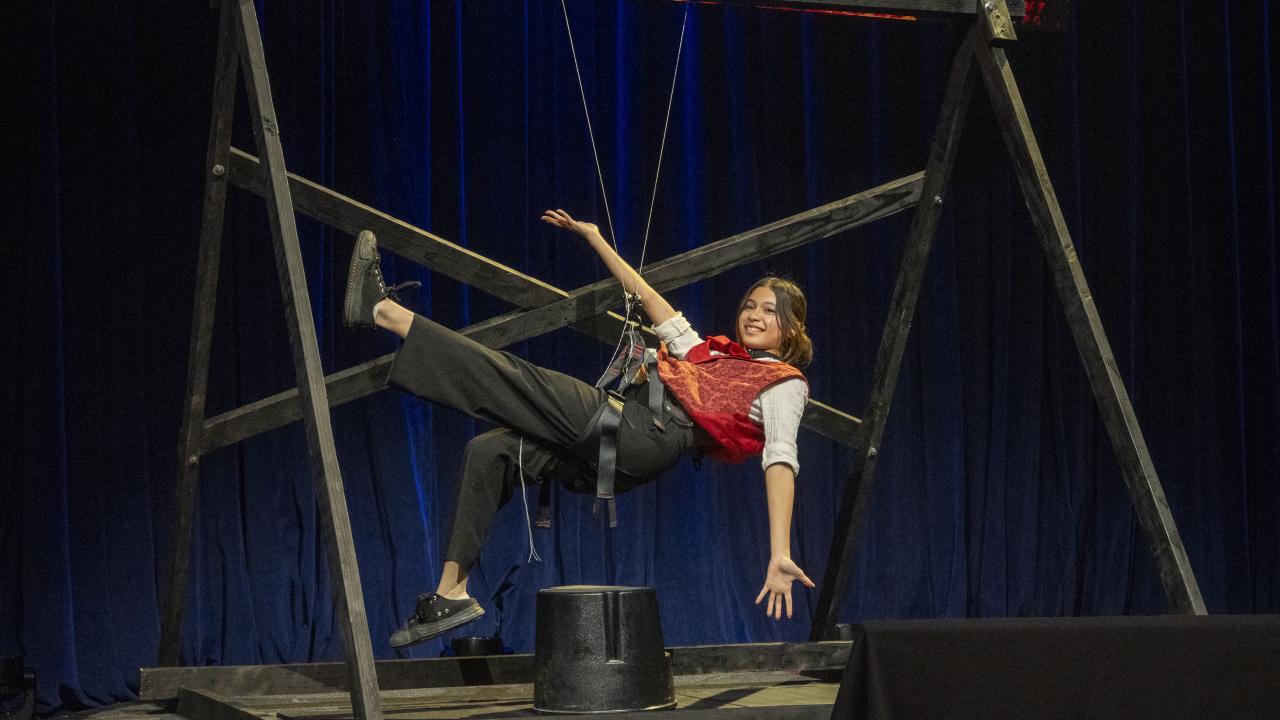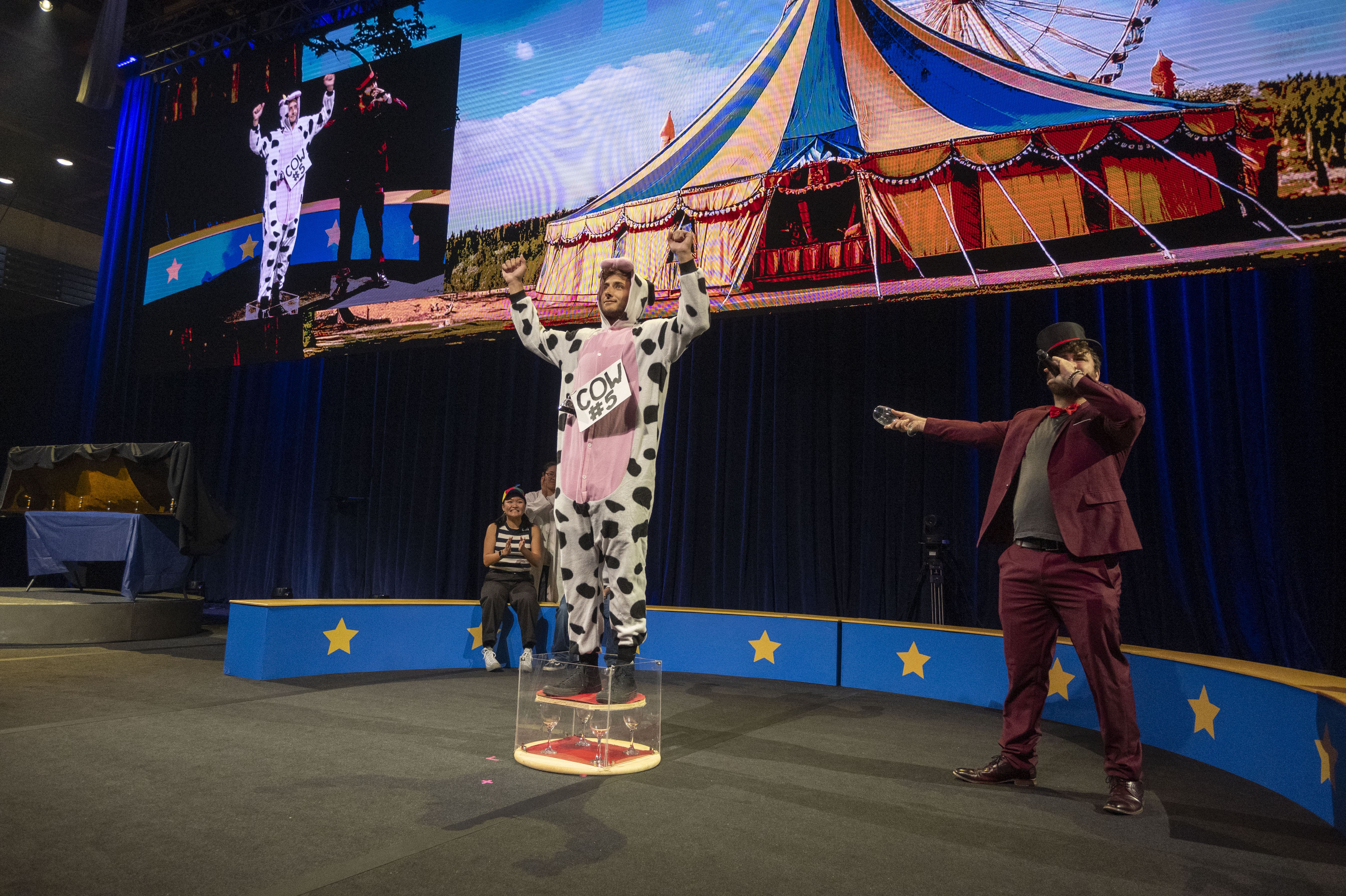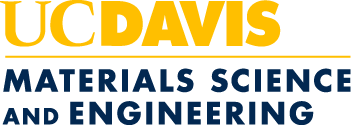
The Magicians Behind the MASC
As a raptured audience looks on inside Khaira Lecture Hall at the University of California, Davis, a magician commences their act’s most famous trick: making one of their assistants levitate. A giant swing set-like structure is brought out. Two thin threads attached to either side of the beam hang above the ground. These threads — thinner than the ones that are used to sew a shirt together — are then pulled to a central point and tied to a safety belt. Using a stool, the assistant is secured in the safety belt. Once the stool is removed, ta-da! The assistant is floating, only being held up by string.
But wait, how is this possible? The magician steps forward and provides the answer: the secret is in the threads. The string is made up of replicated spider silk, a strong synthetic material made from spidroin proteins, which are created using bioengineering and various synthetic production methods. Using different hosts for spider silk genes, engineers can create, refine and enhance the miracle material to use in anything from sustainable textiles to bulletproof materials and medical sutures.
This is one of the acts of the Materials Magic Show, an event the Materials Advantage Student Chapter, or MASC, has performed since 2017 at the UC Davis’ annual open house Picnic Day. At the Materials Magic Show, Picnic Day attendees are treated to a materials science demonstration packaged as a scripted play suitable for general audiences that incorporates different “magic tricks,” including a laser show, liquid nitrogen and LEDs.

“Not only do we make materials science entertaining, but we also provide an explanation simple enough for any audience to learn,” said President of MASC Shirin Sidharta, a third-year undergraduate international student studying materials science and engineering. “That’s my favorite part.”
While the Materials Magic Show shines a brief spotlight on materials science and engineering, the members of the UC Davis chapter of MASC work every day to create pathways for students to find themselves and, later, a career in this important field.
MASC-ing Up
MASC is a student club that connects undergraduates with resources from leading professional materials organizations, including the American Ceramic Society, the Association for Iron & Steel Technology, ASM International and the Minerals, Metals, and Materials Society.
The club prioritizes connecting its members with opportunities in the Davis area to prepare materials science and engineering students with career experience, including lab tours, research faculty connections and internship opportunities.
For example, MASC students were recently invited to the Lawrence Livermore National Laboratory, or LLNL, which included tours of the National Ignition Facility and the Advanced Materials Laboratory. The members had a panel and lunch with UC Davis alumni working at the lab’s UC Livermore Collaboration Center, a UC multi-campus facility located at LLNL to foster partnerships between campuses and the national lab.
“I feel like everyone found [the visit] really valuable for their professional career. [After the tour], a lot of our members were motivated to do internships and contact national laboratories outside campus,” said Sidharta.

MASC also facilitates professional interactions with “professional nights.” These are meetings with UC Davis alumni and professors, like Distinguished Professor Emeritus of Materials Science and Engineering Subhash Risbud, to discuss available campus resources, including the Undergraduate Research Center and the Career Center, and answer questions on how to work with a lab and how to reach out to a research professor.
Other club meetings involve workshop sessions dedicated to setting up members for career success. They update students with upcoming material science opportunities from the chapter’s newsletter, how to build a resume, and how to use LinkedIn.
“A lot of first years are still learning the general stuff. They don’t know how to get into a lab. They don’t know if they’re even needed in a lab,” said Sidharta. “We tell them, ‘Oh, you can join the lab as early as you want. We can connect you.’”
Tiny But Mighty
A common misconception about materials science and engineering is they just work with plastic or metals; however, the major goes deeper than interacting with basic materials. Students learn about nanomaterials, semiconductors, photovoltaic physics, electrical device physics and biomaterials. They ask questions like, “What materials connect with body tissues to help amputees?” and “What materials are important for pill capsules?”
All of these questions lead back to the Materials Magic Show.

“The importance of the Materials Magic Show is to introduce people to the fun parts of materials science and help them think, ‘Hey, maybe I want to choose this major in the future,’” said Benetta MacAuley, the club’s treasurer and a third-year materials science and engineering undergraduate.
“Through educational awareness, people realize that, wait, it’s so much cooler. Even though we are a niche major, we actually have one of the broadest applications in the STEM field,” added Sidharta.
The club fosters a close-knit community of around 20-30 active participants. Networking is the biggest opportunity of the small major. MASC members get priority seats in receiving advice from upperclassmen and building strong bonds with everyone from the major.
“We don’t function like larger clubs. Because the major is so limited, we focus on building connections and catering towards what members want,” said Sidharta.
“I kind of like the major being small, just because it makes it so much easier to connect with everyone,” adds MacAuley.
MASC will perform its Materials Magic Show at the 111th Picnic Day on April 12, in Khaira Lecture Hall. For more information, visit their event page on the Picnic Day website, or see the full list of Picnic Day events and exhibits to plan your visit.
